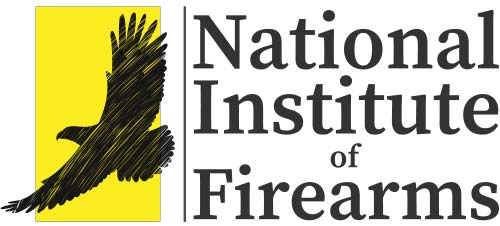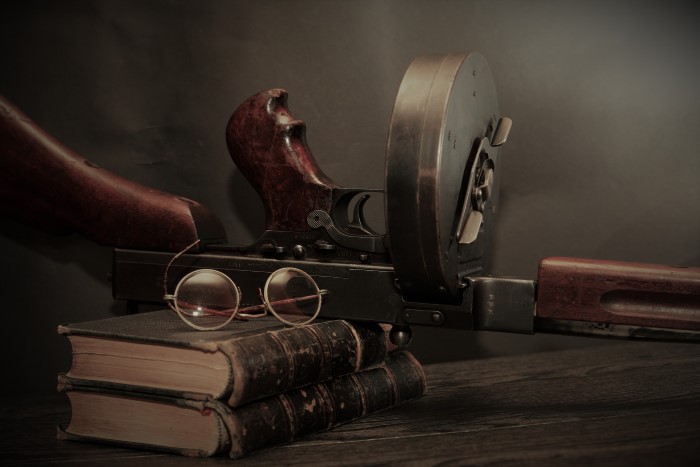We Need To Talk: The “Illegal” Firearm
We’ve already spent a little time touching on some basic firearm jargon and terminology, but there’s still a ton of terms and misconceptions out there that confuse even the most seasoned of firearms owners. While chatting with a friend this past weekend – an older friend who grew up on a farm and used firearms his whole life – I realized there’s a pretty common misconception that’s centered around this concept of “illegal” firearms. Basically, while chatting he made reference to “illegal” firearms as he talked about some shotguns his dad used to have on the farm. I was quick to correct the notion that they’re not actually illegal, but the fact that so many people, (firearm owners and non-firearm owners alike), get this one wrong… well, it worried me.
I mean, it’s easy to understand why many people are confused about this one though… when we hear “illegal”, we all assume a broad interpretation that refers to anything against the law. An illegal drug, for instance, is easy to understand. The possession or distribution of cocaine is unlawful under any circumstances, but this is not the case for firearms. Most of the firearms purchased in the United States are legal but can become illegal through unlawful secondary selling, use, or distribution. For example, if you lawfully purchase a firearm and then conceal that firearm without the proper licensing, it becomes illegal.
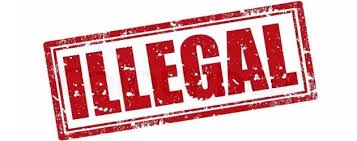
The confusion of the definition of an “illegal firearm” is added to by the ever-changing landscape of various state laws and federal regulations. For states, every time they draft a new law, they have to define certain key terms… that means that one state’s definition can (and does) vary from the next. Due to the variations and how unclear the current state and federal laws are, it’s difficult to keep track of a firearm when it switches from legal to illegal based on location or use. Of course, when we begin talking about NFA or Title II firearms, things start to become even more confusing… and is where a lot of this misconception of what an illegal firearms is seems rooted.
The National Firearms Act (NFA) of 1934 was the federal government’s first attempt of gun-control legislation. It covered two types of firearms: machine guns and short-barrel firearms, mostly due to the highly publicized gangster violence with machine guns like the “Tommy Gun”. At that time U.S. Attorney General Homer Cummings and his staff began the process of drafting recommended legislation that would seek to control the spread of firearms to the general public at the request of President Franklin D. Roosevelt.
Cummings and his staff quickly determined that, rather than ban weapons and run afoul of the Second Amendment, they would try to tax such weapons out of circulation. As originally proposed, the NFA covered a fairly broad range of weapons, but as passed by Congress, it’s scope was narrowed to cover only “A shotgun or rifle having a barrel of less than eighteen inches in length, or ‘any other weapon’ (AOW), except a pistol or revolver, from which a shot is discharged by an explosive if such weapon is capable of being concealed on the person, or a machine gun.”
The statute levied a two hundred dollar tax on each firearm that falls into the NFA qualifications or for the transfer of one. This was to be paid by the transferor and must include the appropriate stamps by the commissioner. It was declared unlawful for anyone to sell or receive a firearm in violation of this section, and they could be fined $2,000 and imprisoned for up to five years for violating it.
While two hundred dollars doesn’t sound like much to some now, we have to remember this was back in 1934. In 2018, that’s like having to pay $3,735 for the ability to even own one of these firearms; let alone the cost of the firearm itself, which in some cases was far less than the tax stamp cost. This act also required the dealers of the listed firearms to be registered with the federal government and required for firearms sold before the effective date of the act. It specifically stated that “every person possessing a firearm shall register, with the collector of the district in which he resides, the number or other mark identifying such firearm, together with his name, address, place where such firearm is usually kept, and place of business or employment, and, if such person is other than a natural person, the name and home address of an executive officer thereof.”
While the amount of the tax today is considerably less of an impact than it was when it was first drafted, (the tax is still $200 after all), it seems the damage it did to the accessibility of these types of firearms was achieved. To add to the NFA, though, in 1986 additional federal legislation called the Firearm Owners Protection Act (FOPA) prohibited the possession of “new” machine guns by citizens; meaning that only those made prior to 1986 were lawful to be possessed by citizens. This additional ban on machine guns created a significant supply-and-demand price increase which turned machine guns that originally retailed for $1,000 into $15,000 purchases nearly overnight – ultimately adding to their unattainability to the masses.
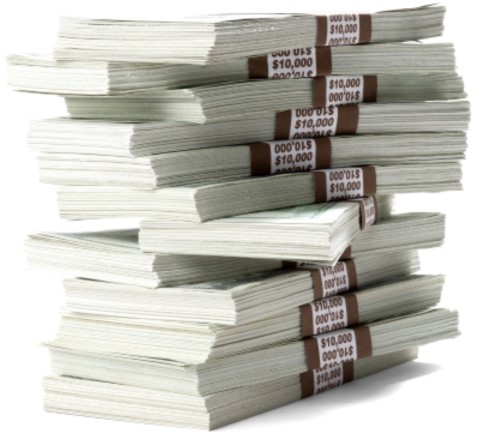
In the end, some of the firearms that are thought to be illegal today are actually still completely legal so long as the purchaser meets the requirements of the federal government, pays for, and receives the appropriate tax stamp. The complexity of these federal regulations in concert with individual state regulations sometimes proves to be a pretty significant deterrent to ownership of these types of firearms too. Of all the NFA firearms, for example, machines guns are the most restricted; in addition to the regulations mentioned above, they also have to have been made before 1986 to meet the federal regulations, and at the state level they can’t have been outright banned in that state or have any features that have been banned in that state either.
The NFA covers more than firearms alone – also including firearm accessories like silencers, destructive devices like grenades and rocket launchers, and “any other weapon” (AOW) such as a disguised or improvised firearm; think “James Bond”. Short- barrel rifles, shotguns, and automatic firearms can be manufactured today but are extremely difficult to get thanks to these regulations. As with any law, the parameters that these firearms are required to meet are left up to the judgment of the ATF, who oversees the NFA process and are known to take well over 12 months to approve a single transaction, which just adds to the unavailable nature of these types of items.
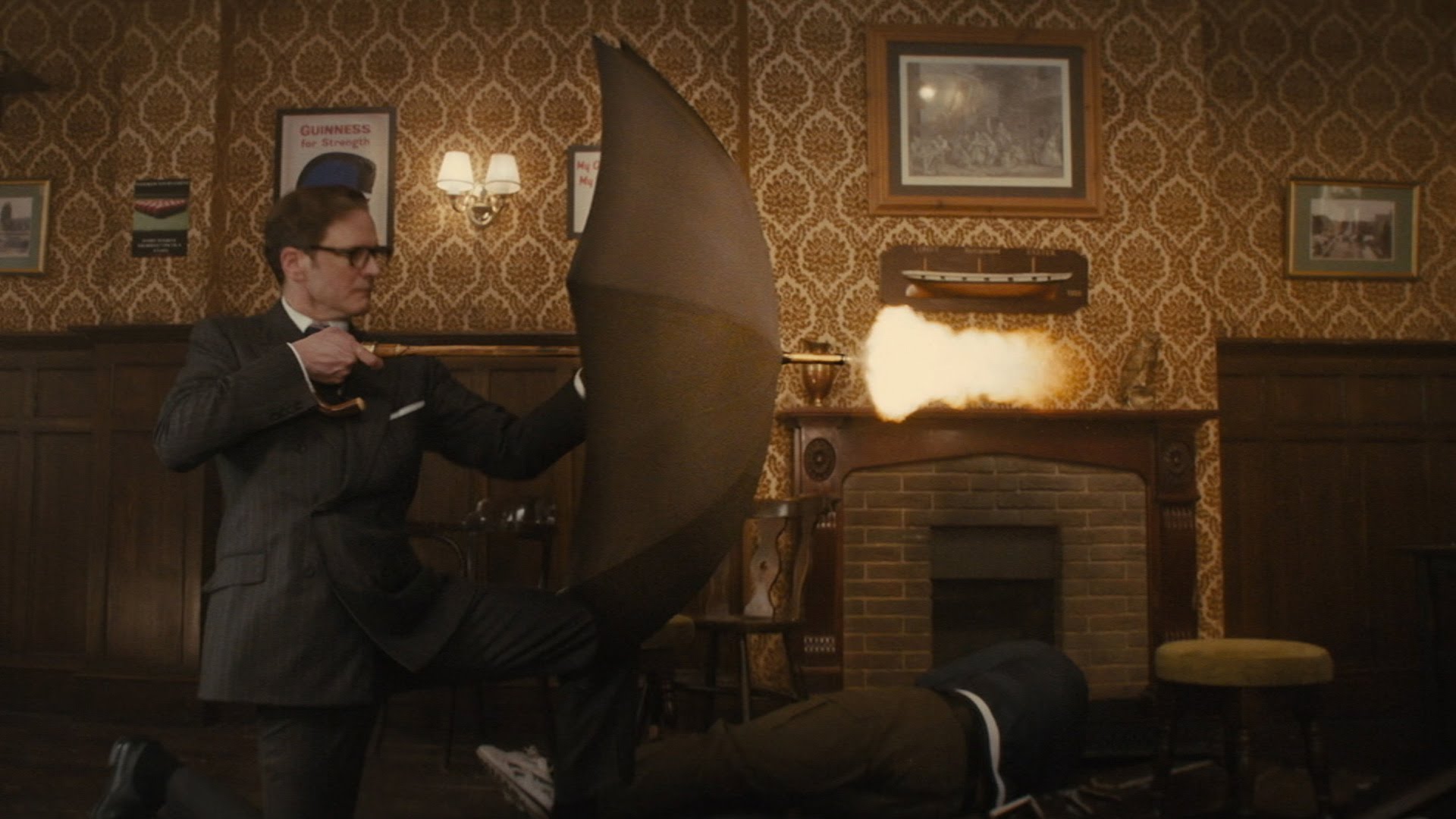
“Umbrella Gun” From Kingsman: The Secret Service (film)
Thinking back to my weekend conversation, I realize just how common this misconception is. While these hard-to-attain weapons are not illegal, I’ve seen countless “people in the know” – people who DO KNOW better – feed into the notion that you just can’t get your hands on something like a fully automatic weapon anymore… but it’s just not true. The ownership of Title II (NFA) weapons is NOT illegal, they’re just heavily regulated at both State and Federal levels. Restrictions are imposed on this ownership and manufacturing of such items, but they are simply NOT unobtainable…
So, if you’re hearing questions like, “Aren’t machine guns illegal?” or the same basic question for things like automatic firearms, silencers, short-barrel shotguns, and AOW’s…. you’re in the know now and can help spread the right knowledge; no, they’re not illegal, they’re just a little harder to get thanks to all the federal regulation. Of course, that might be a little different if your state has something else in place though…
But, what else are you hearing frequently that’s just not right about firearms? Did we cover this one well enough or is there more to say? Let us know what you think in the comments below, or better yet – join us on chat here.
Join in the Conversation!
![]()
We want to hear from you!
Join us on Discord - it's FREE.
